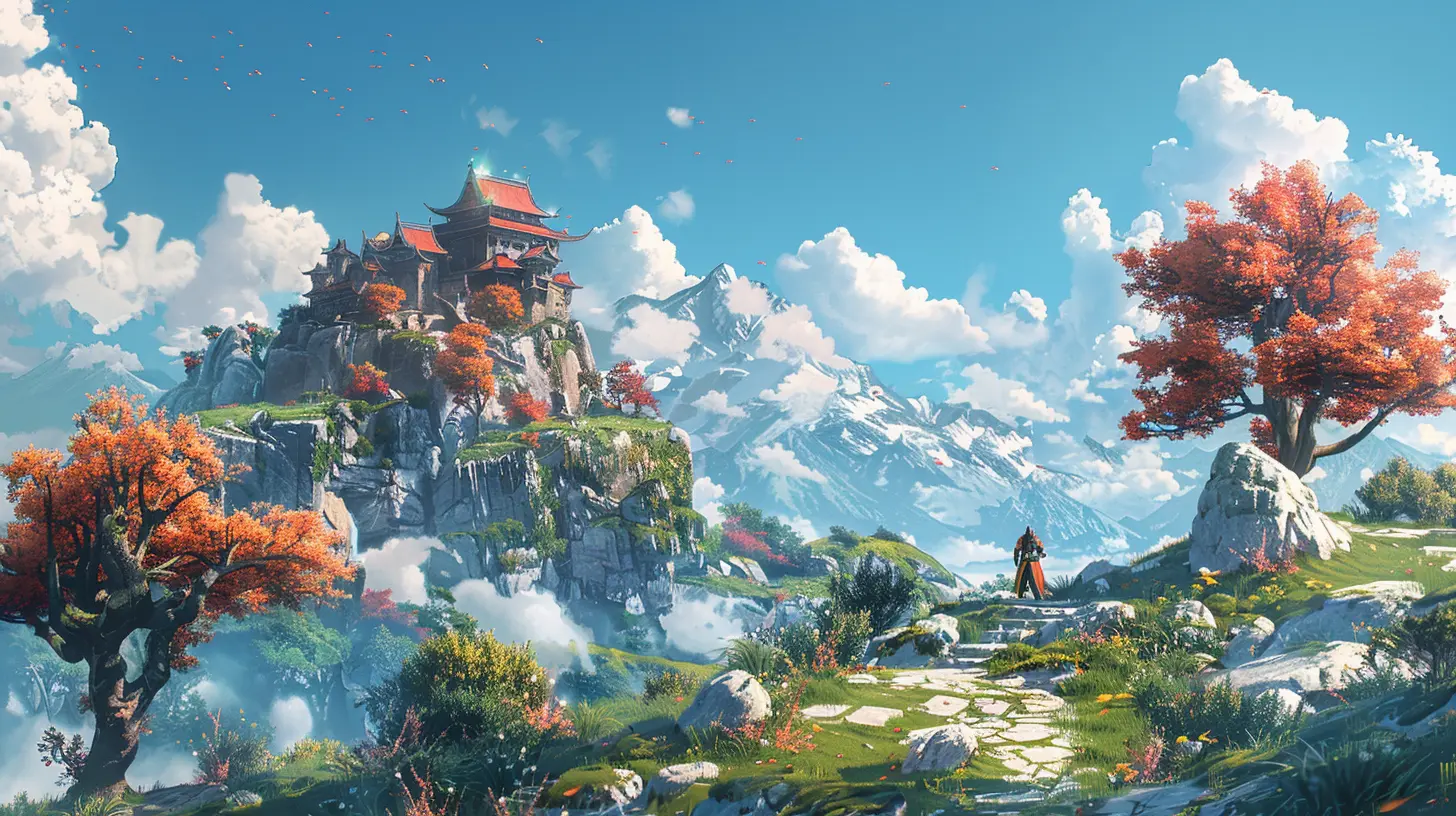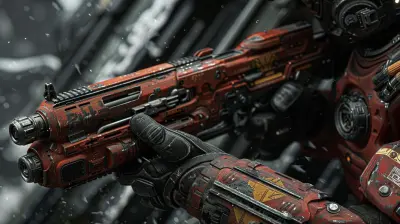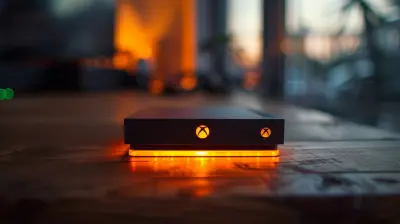How To Monetize Games Developed with Free Game Engines
14 August 2025
So, you've built an awesome game with a free game engine, huh? Maybe you're using Unity's free tier, Unreal Engine's royalty-based model, or something like Godot or GDevelop. You've poured your heart into it, added every pixel with love, and coded your way through countless cans of energy drinks. Now you're staring at your masterpiece like, "How do I get some sweet, sweet cash for all this effort?" Don't worry, my friend. I've got your back. Let’s dive into the world of game monetization with a blend of humor and a whole lot of helpfulness.
Why Free Game Engines Are a Blessing for Developers
First off, let's take a moment to appreciate free game engines. They're like the "free samples" at a grocery store—except instead of a tiny cube of cheese, you're getting an entire toolkit for building your dream game. These engines have democratized game development, allowing indie devs, small studios, and even that one guy coding in his mom's basement (you know who you are) to create truly incredible experiences without spending a dime upfront.But here's the thing—just because the engine is free doesn't mean you're running a charity! You deserve to make money from your hard work. And while free engines don’t charge you upfront, some might have terms like royalties or revenue sharing. Keep those in mind as we dive into your monetization options.
Step 1: Choose Your Monetization Path
You’ve got options here, my friend. Think of it as a "Choose Your Own Adventure" book, except instead of ending up trapped in a cave (I really hated those endings), you’re deciding how your game makes money. Here are the most popular paths:1. Charge for the Game (Premium Model)
Ah, the good ol’ "Pay once, and it’s yours" approach. If your game is so good that people will throw money at you just for the privilege of playing it, this is the way to go.- Pros: Instant revenue. You get players’ money up front—no waiting around to hit monetization thresholds.
- Cons: Convincing people to open their wallets for a new game is harder than convincing a cat to take a bath. Oof.
> 💡 Pro Tip: Consider platforms like Steam or itch.io for hosting your premium game. They’re great for reaching a wide audience.
2. Freemium Model
"Free to play" but "pay to slay." This model makes your game free to download but charges players for in-game items, upgrades, or features. Microtransactions? Sounds fancy.- Pros: Virtually no barriers to entry! Players love "free" like cats love laser pointers.
- Cons: If done wrong, players might accuse you of being greedy. Nobody likes a paywall that feels more like a brick wall.
> 💡 Pro Tip: Offer cosmetic upgrades (skins, cool hats, sparkly swords). People are weirdly willing to pay for virtual fashion statements.
3. Advertising
You know those annoying ads that interrupt your game of Solitaire at the worst possible moment? Yeah, you can be that guy.- Pros: Steady revenue stream if your game gets enough players.
- Cons: Ads can annoy players faster than a pop quiz on a Friday afternoon.
> 💡 Pro Tip: Keep the ads unintrusive. Nobody wants an ad ruining their high score streak.
4. Subscriptions
If your game has ongoing content or an online multiplayer component, consider charging a subscription fee. Think of it like Netflix, but for your game.- Pros: Recurring revenue that keeps your game’s lights on.
- Cons: Players are more picky about committing to subscriptions than they are about swiping right on dating apps.
Step 2: Pick a Platform and Maximize Exposure
Imagine you've opened a really awesome taco stand. You could have the best tacos in the universe, but if your stand is in the middle of the desert, no one’s going to buy them. It’s the same with games: you need a good platform to sell or distribute your game.Platforms to Consider:
- Steam: The king of PC gaming. If your game’s got quality, this is the place. Plus, there are tons of gamers browsing for new stuff daily.- Mobile App Stores: iOS App Store and Google Play are gold mines, especially for freemium games. Just remember, they’ll take their cut.
- Itch.io: Perfect for indie devs. It’s like a hipster coffee shop where gamers love discovering quirky gems.
- Consoles: A bit trickier but worth it if your game gains traction.
> Fun Fact: Gamepass-style subscription services (like Xbox Game Pass) might pay developers upfront for including their games in the library. Cha-ching!
Step 3: Build Hype Like a Pro
No matter how great your game is, if no one knows about it, it’s like yelling into the void. Marketing is your new best friend. And no, that doesn’t mean just spamming your Twitter followers.Here’s how you can hype up your game:
- Social Media: Share updates, sneak peeks, or behind-the-scenes funny bloopers. Be human. People love that.- YouTube/Twitch: Get streamers and YouTubers to play your game. They’re the modern-day equivalent of word-of-mouth marketing.
- Build a Community: Discord, Reddit, forums—create a space where fans can geek out about your game (or complain about how hard Level 7 is).
- Trailers: A good trailer is like a movie trailer but for your game. Make it flashy, make it snappy, and for the love of Mario, make it exciting.
Step 4: Optimize for SEO (Yes, Even Games Need SEO)
Wait, what? SEO for games? You betcha! Search engine optimization isn’t just for blogs and cat memes—it applies to your game too.- App Store Optimization (ASO): If your game is on mobile, you’ll want to optimize its title, description, and keywords so it ranks higher on app stores.
- Keywords: Add keywords like "free indie game," "best mobile games," or "action-packed platformer" so people can find your game online.
- Website: Create a landing page for your game with a blog, FAQs, and an option to join an email list. Add keywords subtly—don’t sound like a robot.
Step 5: Post-Launch Monetization
Here’s the deal: Launch day is just the beginning. Keep earning by keeping your game alive and relevant. Here’s how:- DLC (Downloadable Content): Adding new levels, characters, or stories can keep players engaged. Who doesn’t love a good expansion pack?
- Updates: Fix bugs, add new features, and keep the game fresh. Think of it like watering a plant or feeding your Tamagotchi.
- Season Passes: Great for multiplayer or ongoing content. Players pay upfront for goodies they receive over time.
Common Mistakes to Avoid
Because I care about you, let me save you from a few facepalm-worthy blunders:- Overloading with Ads: Don’t annoy your players to the point of uninstalling your game faster than they installed it.
- Unbalanced Microtransactions: Make sure people who don’t pay can still have fun. Otherwise, you’ll be slapped with the dreaded "Pay-to-Win" label.
- Poor Communication: Players hate being left in the dark. Talk to your community and address feedback.
Final Thoughts: Cashing in Without Selling Out
At the end of the day, making money from games developed with free game engines is about balance. You want to earn enough to fuel your next big project (and maybe buy a pizza or three), but you also don’t want to alienate your audience. Respect your players, be transparent, and focus on delivering a killer gaming experience. If you do that, the money will follow. Now go forth, indie dev, and turn that passion project into a profit machine!all images in this post were generated using AI tools
Category:
Game EnginesAuthor:

Avril McDowney
Discussion
rate this article
1 comments
Harlow Mullen
Creativity and ethics intersect; monetize without compromising artistic integrity.
August 30, 2025 at 3:23 AM

Avril McDowney
Absolutely! Balancing monetization with artistic integrity is key to sustainable game development.


